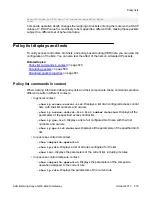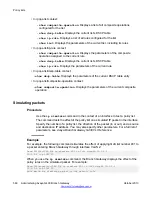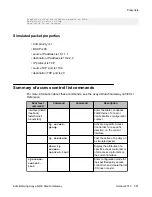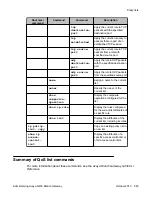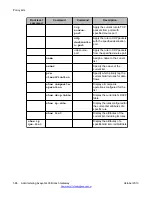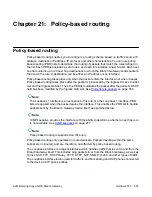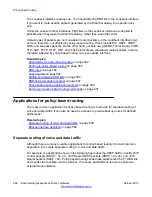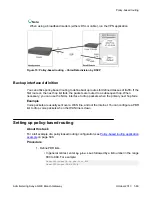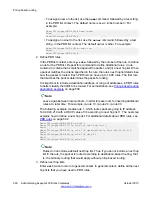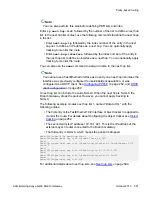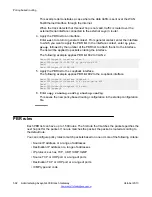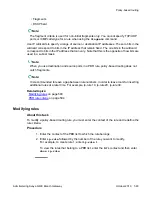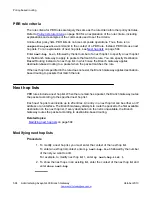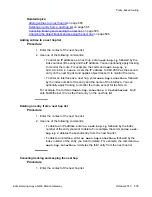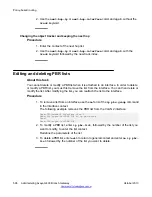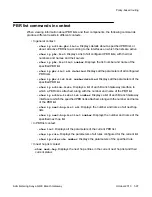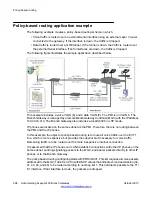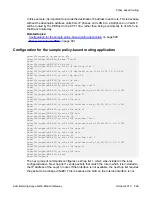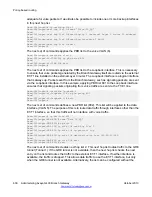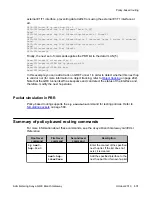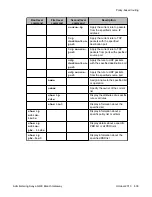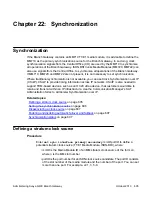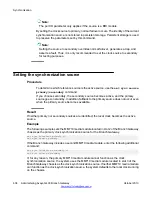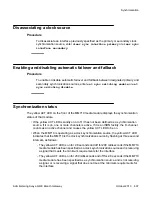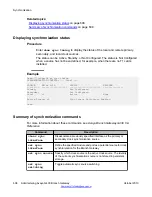
• Fragments
• DSCP field
Note:
The fragment criteria is used for non-initial fragments only. You cannot specify TCP/UDP
ports or ICMP code/type for a rule when using the
fragment
command.
Use IP wildcards to specify a range of source or destination IP addresses. The zero bits in the
wildcard correspond to bits in the IP address that remain fixed. The one bits in the wildcard
correspond to bits in the IP address that can vary. Note that this is the opposite of how bits are
used in a subnet mask.
Note:
When you use destination and source ports in a PBR rule, policy-based routing does not
catch fragments.
Note:
It is recommended to leave a gap between rule numbers, in order to leave room for inserting
additional rules at a later time. For example, ip-rule 10, ip-rule 20, ip-rule 30.
Related topics:
on page 593
Modifying rules
About this task
To modify a policy-based routing rule, you must enter the context of the rule and redefine the
rule criteria.
Procedure
1. Enter the context of the PBR list to which the rule belongs.
2. Enter
ip-rule
followed by the number of the rule you want to modify.
For example, to create rule 1, enter
ip-rule 1
.
To view the rules that belong to a PBR list, enter the list’s context and then enter
show ip-rule
.
Policy-based routing
Administering Avaya G430 Branch Gateway
October 2013 593
Summary of Contents for G430
Page 1: ...Administering Avaya G430 Branch Gateway Release 6 3 03 603228 Issue 5 October 2013 ...
Page 12: ...12 Administering Avaya G430 Branch Gateway October 2013 ...
Page 246: ...VoIP QoS 246 Administering Avaya G430 Branch Gateway October 2013 Comments infodev avaya com ...
Page 556: ...IPSec VPN 556 Administering Avaya G430 Branch Gateway October 2013 Comments infodev avaya com ...

